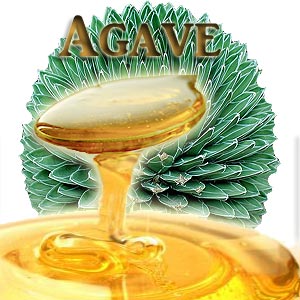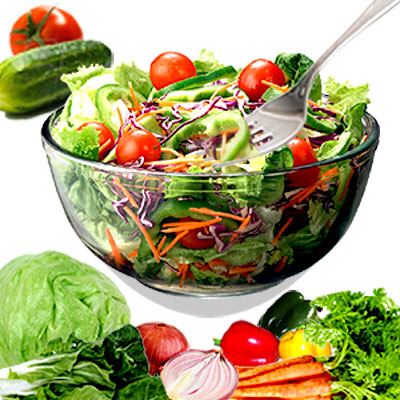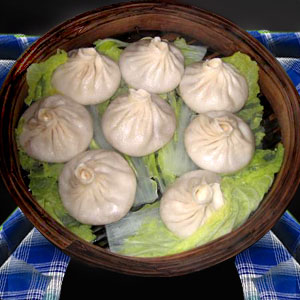Agave Nectar

The preferred healthy alternate for refined sugar, Agave nectar is a natural and healthy sweetener preferred by many. Agave nectar has been used through ages as a flavoring agent and has been found to have scores of health benefits. Agave nectar is available in processed as well as raw form.
Agave nectar is derived from the agave plant. The plant, when aged 7-10 years is cut off and agave nectar is extracted from the pina; pina being the core part of the plant. Agave nectar is extensively produced in Mexico. Agave nectar is a delicious sweetener and tastes similar to honey. Agave looks like honey in color and texture; however it is not as thick and flows more easily. It can be used to sweeten any type of food. In recipes where honey can be used, agave nectar can be substituted in equal quantities.
Agave tastes sweeter than natural sugar. In recipes where sugar has to be replaced with agave nectar, substitute three quarters agave for every one measurement of sugar.
Agave syrup is available in a variety of shades from light to amber and dark in color. The light colored nectar has the lightest flavor, rather a neutral flavor. It imparts sweetness however it has no distinct flavor of its own. The amber and dark varieties have a mellow flavor similar to that of maple syrup or honey. More nutrients, minerals and flavor of the plant remain intact in the dark agave syrup.
Agave nectar is highly soluble and dissolves in cold drinks too. Agave nectar or agave syrup or agave sweetener is sold in health food stores and supermarkets. Many vegans prefer agave nectar over sugar.
Agave nectar health benefits
Low Glycemic Index: The best health-promoting aspect of agave nectar is its favorable glycemic profile. The nectar derives its sweetness primarily from a complex form of fructose called inulin. Fructose is a natural occurring sugar present in fruits and vegetables. The carbohydrate in agave nectar has a low glycemic index and so does not cause a 'sugar rush' and does not increase blood sugar as other sugars do. Agave nectar is a delicious natural sweetener and can be moderately used by diabetic people, dieters and those on restricted sugar diets.
Low in calories: People who are watching the calories they consume can try agave nectar as a healthy option as it is loaded with fewer calories when compared with sugar.
Sweeter than sugar: It is supposed to be one and a half times sweeter than regular sugar. Due to its concentrated flavor, lesser quantity can be used in place of sugar.
Organic alternate: As it is extracted from a desert plant, agave nectar is classified as an organic product. It is accepted widely and carries the USDA organic label.
Calcium: Agave nectar encourages calcium absorption and thus improves bone density and promotes overall health.
Nutrition: Though a teaspoon full of agave syrup has the same number of calories as that of sugar, its rich fiber content makes it a healthy alternate to sugar. It is said to help in weight loss. Its anti-inflammatory and anti-bacterial properties offer resistance against intestinal bacteria.
Skin: Agave nectar when applied directly on the skin protects and fights pyogenic (pus producing) bacteria; thus protecting the skin.
Cooking: Agave nectar is safe for use in all kinds of recipes unlike a few artificial sweeteners. It can be used in desserts, baked goods, etc. The cooking time and amount of water needs to be adjusted owing to its liquid nature.
Easy to use: It can be mixed with cold drinks and will not solidify as honey does; it also dissolves easily when compared to sugar.
Easy to digest: Agave nectar is easy to digest and poses no threat to the digestive system.
Shelf life: Agave nectar has a long shelf life.
Agave plant
Agave has been extensively cultivated in Mexico. Agave is a succulent plant and resembles a cactus plant. The agave plant has a large rosette of thick fleshy leaves; each leaf ending with a sharp point. The core of the plane known as 'pina' is located amidst the leaves. The pina weighs about fifty pounds when fully grown.
Agave rosette grows slowly and flowers only once. When the agave plant is ready to flower, a tall stem grows from the center of the leaf rosette which in turn produces a large number of short tubular flowers. Once the fruit develops, the original plant dies, however shoots are often produced from the base of the stem which become new plants. Four major parts of the agave plant have culinary uses.
Leaves: Are rich in sap and can be eaten. Agave leaves can be collected during spring and winter, these are the seasons when is the plant is rich in sap.
Flowers: Are edible and can be tossed in salads. Agave plants flower during summer. Each plant produces several pounds of flowers.
Sap: Used to make sweetener and tequila.
Stalks: Can be roasted before they flower and they have a molasses-like flavor. Stalks are ready in summer and weigh several pounds each.
Agave plants are popular as ornamental plants too. The flowering stem forms a natural razor; they can be dried and cut into slices. The expressed juice of the leaves lathers like soap when used with water. Native Mexicans made nails, needle and pens made from agave plant. The stalks are dried and used as didgeridoos, a wind instrument.
The plant has some medicinal use too. Leaf tea or tincture consumed orally treats constipation and flatulence. It is also used as a diuretic. The root of the plant is consumed as tea or tincture to treat arthritic joints.
Top of the Page: Agave Nectar
Tags:#agave nectar benefits #agave sweetener #agave plant
 Food and Nutrition Facts
Food and Nutrition Facts Chamomile
Parsnip Soup
Dim Sum
Gazpacho Soup
Whole Grain Cereal
Jicama Nutrition
Bok Choy Stir Fry
Chia Seeds Benefits
Teff Nutrition
Kaniwa
Flax Seed
Wheatgrass Benefits
Kelp Benefits
Types of Chili Peppers
Medicinal Benefits of Pomegranate
Arugula Leaves
Maca Root
Pitaya Fruit
Benefits of Celery
Leek
Asparagus Benefits
Oyster Stew
Oyster Mushroom
Lupin Beans
Quinoa
Freekeh
Extra Virgin Olive Oil
Dill Pickle
Sauerkraut
Fat Burning Foods
Nutrition Chart
Food Combining
Calorie Counter
calories ...
Non Alcoholic Beverage
Punch Recipes
Food Label Nutrition
Homemade Sausages
Cooking Steak
Eating on a Budget
Budget Friendly Recipes
Quick Recipes
 Healthy Packed Lunch
Healthy Packed Lunch Overnight Oats Recipes
Eggplant Casserole
Brunch Recipes
Burrito Recipes
Muffin Recipes
Cupcake Frosting
Apple Crisp
Stir Fry Cooking
Seafood Salad Recipe
Cooking Corn on the Cob
Finger Food Recipe
Sandwich Recipe
Bread Stuffing Recipes
Easy Chili Recipes
Picnic Recipes
Edible Mushroom Recipes
Mushroom Soup Recipes
Dip Recipe
Tapas Recipe
Corned Beef Recipe
Canned Salmon Recipe
Tilapia Recipes
Crumb Cake
Flourless Chocolate Cake
Regional Food
 Lasagna Recipe
Lasagna Recipe Peruvian Ceviche
Chinese Food Recipe
Vietnamese Food Recipe
Malaysian Food
Korean Food Recipe
Indian Curry Recipe
Edible Rice Paper
Mexican Food Recipe
Quesadilla
Guacamole Dip
Italian Food Recipe
Spanish Food Recipe
Kosher Food
Falafel Recipe
Tandoori Chicken
Noodles
Canape
Couscous
Meatloaf
Chowder
Gumbo Recipe
Crockpot Recipes
Moroccan Food
Healthy Food
Pre Workout Snack
Matcha Tea
Simple food Swaps to Lose Weight
Foods to Beat Stress
Foods to beat Insomnia
Bone Density Foods
Prebiotic Foods
Kefir Grains
Agave Nectar
Spicy Trail Mix
Pesto Sauce
Homemade Hummus
Crab Cake Sauce
Bamboo Shoots Nutrition
Lemon Grass Plant
Butter Beans Recipes
Loose Green Tea
Seaweed Nutrition
Healthy Food
Low Fat Granola Bar
Steel Cut Oatmeal
Fruit Pizza
Pizza Toppings
Green Smoothie
Healthy Meal Planning
Delicious Mealtime Recipes
Heart Healthy Fats
Healthy Heart Recipe
Healthy Dinner Recipe
Healthy Dessert Recipe
Healthy Fast Food
Healthy Kid Recipe
Probiotic Food
Diabetic Friendly Foods
Fruit Salad Recipe
Bread Pudding
Tofu Recipe
Oat Bran
Broccoli Salad
Avocado Recipe
Iron Rich Food
Brain Foods
Antioxidant Food
Natural Diuretic
Low Fat Cooking Tips
Rice Pilaf Recipe
Low fat Chicken Recipe
Food Tips

Sous Vide Cooking Technique
Natural Sugar Substitute
Stevia Sugar Substitute
Sunflower Seeds Nutrition
Bouquet Garni
Cake Decorating Tips
High Satiety Foods
Thanksgiving Dinner
Safe Food Storage
Frozen Food Storage Tips
Cold Storage Food Tips
Leftover Recipe
Food Pyramid
Dairy Free Food
Microwave Cooking
Food Intolerance
Homemade Ice Cream
Apple Cider Vinegar
Benefits of Honey
Beverage Cooler
Food Poisoning Symptom
Food Allergy Symptom
Food Addiction
Top of the Page: Agave Nectar
Popularity Index: 101,173

